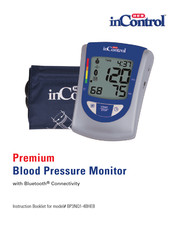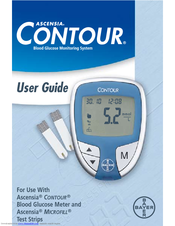

If you have needed glucagon, let your doctor know so you can discuss ways to prevent severe hypoglycemia in the future.

HEB INCONTROL GLUCOSE METER MANUAL HOW TO
The people you are in frequent contact with (for example, friends, family members, and coworkers) should be instructed on how to give you glucagon to treat severe hypoglycemia. Speak with your doctor about whether you should buy a glucagon product, and how and when to use it. For those who are familiar with injectable glucagon, there are now two injectable glucagon products on the market-one that comes in a kit and one that is pre-mixed and ready to use. Glucagon is available by prescription and is either injected or administered or puffed into the nostril. Glucagon is used to treat someone with diabetes when their blood glucose is too low to treat using the 15-15 rule.

Glucagon is a hormone produced in the pancreas that stimulates your liver to release stored glucose into your bloodstream when your blood glucose levels are too low. When low blood glucose isn’t treated and you need someone to help you recover, it is considered a severe event. Complex carbohydrates, or foods that contain fats along with carbs (like chocolate) can slow the absorption of glucose and should not be used to treat an emergency low.
When treating a low, the choice of carbohydrate source is important. This needs to be individualized for the patient, so discuss the amount needed with your diabetes team. Young children usually need less than 15 grams of carbs to fix a low blood glucose level: Infants may need 6 grams, toddlers may need 8 grams, and small children may need 10 grams. Using the step-wise approach of the "15-15 Rule" can help you avoid this, preventing high blood glucose levels. This can cause blood glucose levels to shoot way up. Many people tend to want to eat as much as they can until they feel better. They can suggest ways to avoid low blood glucose in the future. Make a note about any episodes of low blood glucose and talk with your health care team about why it happened. Hard candies, jellybeans, or gumdrops-see food label for how many to consume. 1 tablespoon of sugar, honey, or corn syrup. 4 ounces (1/2 cup) of juice or regular soda (not diet). Once your blood glucose is back to normal, eat a meal or snack to make sure it doesn’t lower again. Repeat these steps until your blood glucose is at least 70 mg/dL. If it’s still below 70 mg/dL, have another serving. The 15-15 rule-have 15 grams of carbohydrate to raise your blood glucose and check it after 15 minutes. If blood glucose stays low for too long, starving the brain of glucose, it may lead to seizures, coma, and very rarely death. This can lead to blurred vision, difficulty concentrating, confused thinking, slurred speech, numbness, and drowsiness. If the blood sugar glucose continues to drop, the brain does not get enough glucose and stops functioning as it should. Epinephrine is what can cause the symptoms of hypoglycemia such as thumping heart, sweating, tingling, and anxiety. If you are experiencing symptoms and you are unable to check your blood glucose for any reason, treat the hypoglycemia.Ī low blood glucose level triggers the release of epinephrine (adrenaline), the “fight-or-flight” hormone. The only sure way to know whether you are experiencing low blood glucose is to check your blood glucose levels, if possible.  Tingling or numbness in the lips, tongue, or cheeks. From milder, more common indicators to most severe, signs and symptoms of low blood glucose include: Taking time to write these symptoms down may help you learn your own symptoms of when your blood glucose is low. Learn your own signs and symptoms of when your blood glucose is low. Signs and symptoms of low blood glucose (happen quickly)Įach person's reaction to low blood glucose is different. Low blood glucose may also be referred to as an insulin reaction, or insulin shock. However, talk to your diabetes care team about your own blood glucose targets, and what level is too low for you. This is usually when your blood glucose is less than 70 mg/dL. Low blood glucose is when your blood glucose levels have fallen low enough that you need to take action to bring them back to your target range. But if it goes below the healthy range and is not treated, it can get dangerous. If it varies within a certain range, you probably won’t be able to tell. Throughout the day, depending on multiple factors, blood glucose (also called blood sugar) levels will vary-up or down.
Tingling or numbness in the lips, tongue, or cheeks. From milder, more common indicators to most severe, signs and symptoms of low blood glucose include: Taking time to write these symptoms down may help you learn your own symptoms of when your blood glucose is low. Learn your own signs and symptoms of when your blood glucose is low. Signs and symptoms of low blood glucose (happen quickly)Įach person's reaction to low blood glucose is different. Low blood glucose may also be referred to as an insulin reaction, or insulin shock. However, talk to your diabetes care team about your own blood glucose targets, and what level is too low for you. This is usually when your blood glucose is less than 70 mg/dL. Low blood glucose is when your blood glucose levels have fallen low enough that you need to take action to bring them back to your target range. But if it goes below the healthy range and is not treated, it can get dangerous. If it varies within a certain range, you probably won’t be able to tell. Throughout the day, depending on multiple factors, blood glucose (also called blood sugar) levels will vary-up or down.








 0 kommentar(er)
0 kommentar(er)
